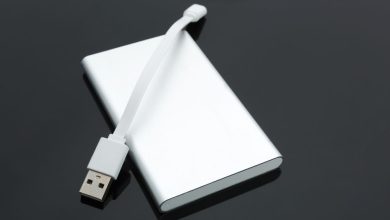In-Depth Guide to Owning a Meat Knife in 2023
Meat Knife

Introductions
When it comes to cooking, having the right tools is essential. One of the most crucial tools for any meat enthusiast is a high-quality meat knife. Whether you’re a professional chef or a home cook, investing in a reliable and efficient meat knife can make a significant difference in the way you prepare and enjoy your meats.
In this in-depth guide, we will explore everything you need to know about owning a meat knife in 2023.
Understanding the Importance of a Meat Knife
A meat knife is an indispensable tool for anyone who enjoys cooking and preparing meats. Unlike regular kitchen knives, meat knives, especially the ones that are hand forged knives, are specifically designed to handle the unique challenges of cutting through different types of meat. They offer enhanced precision, control, and sharpness, making the process of slicing and dicing meat a breeze. Whether you’re a professional chef or a home cook, having a high-quality meat knife can elevate your culinary experience and ensure you achieve the best results in your meat preparations.
Different Types of Meat Knives
The Chef’s Knife
The chef’s knife is a versatile all-purpose knife that can handle a variety of tasks, including chopping, mincing, and slicing meat. Its broad and curved blade allows for easy rocking motion, making it ideal for repetitive cutting motions.
The Boning Knife
As the name suggests, the boning knife is designed for removing bones from meat. It has a thin, flexible blade that can maneuver around bones, joints, and cartilage with ease, ensuring you get the most out of your cuts.
The Carving Knife
The carving knife is the go-to tool for achieving thin, precise slices of cooked meats, such as roasts, turkey, or ham. Its long and narrow blade allows for smooth, even cuts, making it perfect for presentation and serving.
The Cleaver
The cleaver is a heavy-duty meat knife with a thick, sturdy blade that excels at cutting through bones and tough cuts of meat. It’s commonly used in butcher shops and for heavy-duty tasks like breaking down large cuts.
Key Features to Look for in a Meat Knife
Choosing the right meat knife involves considering several key features that affect its performance and longevity.
Blade Material and Construction
High-quality stainless steel or carbon steel blades are preferred for their durability and ability to retain sharpness. Look for full tang construction, where the blade extends into the handle for added strength.
Handle Design and Ergonomics
An ergonomic handle ensures a comfortable grip and minimizes strain during extended use. Handles made from materials like wood, plastic, or rubber offer excellent grip and control.
Blade Length and Thickness
The blade length should match the type of cuts you frequently make. Longer blades are ideal for slicing, while shorter blades provide more control for intricate tasks. Opt for a blade thickness that balances flexibility and sturdiness.
Edge Grind and Sharpness
A razor-sharp edge with the right grind ensures effortless cutting. Consider knives with a double bevel or hollow grind for versatile use.
Choosing the Right Meat Knife for Your Needs
The perfect meat knife depends on your cooking style and preferences.
Everyday Home Cooking
For daily cooking needs, a versatile chef’s knife with a medium-sized blade should suffice. Its multipurpose design can handle most meats and other kitchen tasks.
Gourmet Cooking and Professional Chefs
Chefs who work with different types of meats and require precision cuts should invest in a range of specialized knives, including a chef’s knife, boning knife, and carving knife.
Outdoor and Barbecue Enthusiasts
If you enjoy grilling and barbecuing, a heavy-duty cleaver and a carving knife for serving are essential. These knives can handle thick cuts of meat with ease.
Caring for Your Meat Knife
Proper maintenance is crucial to keep your meat knife performing at its best.
Proper Cleaning and Maintenance
Hand wash your meat knife immediately after use with warm, soapy water. Avoid using abrasive sponges or metal scouring pads that could damage the blade.
Honing and Sharpening Techniques
Regularly Owning a meat knife with a honing rod helps maintain its edge, while sharpening with a whetstone restores the blade’s sharpness when necessary.
Safe Storage Practices
Store your meat knife in a knife block, magnetic strip, or blade guard to protect the edge and prevent accidents.
Safety Tips When Using a Meat Knife
Using a meat knife safely is paramount to avoid injuries.
Hand Placement and Grip
Always grip the handle firmly with your dominant hand and place your other hand on the food to stabilize it while cutting.
Cutting Surfaces and Boards
Use a stable and non-slip cutting board to prevent accidents and ensure a smooth cutting experience.
Knife Handling and Storage
Never leave a meat knife unattended, and store it in a safe location away from children.
Getting the Most Out of Your Meat Knife
Maximize the potential of your meat knife with proper cutting techniques.
Slicing Techniques
For clean and even slices, use a rocking motion with the chef’s knife or the carving knife.
Chopping and Dicing
Master the chop-and-slide technique with the chef’s knife for efficient chopping and dicing of meats.
Deboning and Filleting
Use the boning knife’s flexibility to debone poultry or fillet fish with precision.
Conclusion
Owning a meat knife is a game-changer for anyone who enjoys cooking meat dishes. With the right meat knife, you can achieve professional-level results in your home kitchen. Remember to invest in a high-quality knife, maintain it properly, and follow safety guidelines to ensure a delightful and safe cooking experience.
read more: Why Custom App Development Proves To Be The Best Option









